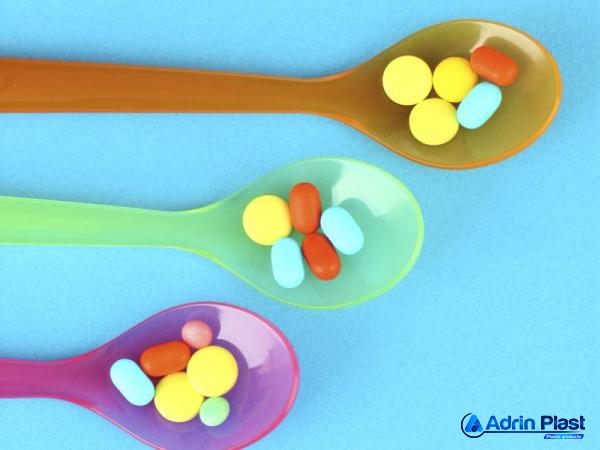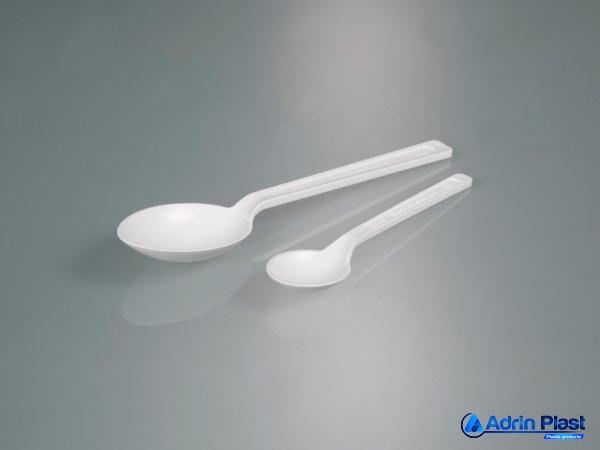Due to the widespread use of plastic in all homes, compared to all industries, an understanding of the raw materials used for this industry such as polyethylene, polypropylene, polymer materials, polystyrene, etc. and its advantages and disadvantages are also among the items that may not attract much public attention.
However, due to the widespread use of plastic, an understanding of the raw materials of plastic is among the items that are necessary. This is not something that should be taken lightly in any way. Having a working knowledge of the many kinds and grades of plastic raw materials is of great importance, especially for those who are active in this business.
This problem becomes even more serious since many individuals have varied allergic responses to the numerous components that are utilized in the business, and they do not grasp the complexities of how plastic is manufactured. Which of them is more significant? However, the issue that arises today is what desirable qualities are possessed by the plastic raw materials that are so widely used in the plastics sector.

And the qualities of the materials used to make plastic are essential to experts. Plastics, in general, are regarded as being hypoallergenic, incredibly robust, capable of being created in an infinite number of creative shapes, in a variety of colors, and for a broad range of uses, by members of the general public as well as by owners of businesses within the sector.
In this post, we are going to talk about raw plastic materials used in the industry and some other issues that might be important for businesses in contact with plastic raw materials. If you are interested in knowing more about this business, contact our experts and ask for the materials you’re interested in.
Raw materials for the plastic industry
To begin, it is essential to point out that the manufacturing of the plastic industry places a significant premium on the standard of the polymeric raw materials used for the process. In general, there are many different kinds of polymeric materials, and each of these kinds, together with the fascinating qualities and functions of plastics, are employed.
To the best of our knowledge, it is unknown whether or not polymers possess macromolecular structures that share many of the same units among them. Even specialty polymers like elastomers, polyesters, polyamides, and polycarbonates are considered engineering polymers since they may be used in a wide variety of applications.

In general, however, plastic raw materials may be broken down into three primary groups of polymer materials. Expanded polystyrene, high-strength polystyrene, and normal polystyrene are the three primary categories into which polystyrene is often classified. In point of fact, polystyrene is classified as an aromatic polymeric substance that is created by the formation and condensation of styrene monomer.
Raw materials used in the plastic industry
We could talk for hours about the many uses of plastic raw materials used in industry, as well as the advantages of this material. There are many different types of plastics that are utilized in industry. However, the following applications are good examples of generic use cases: utensils and apparatus for water distribution and hygiene, creating durable parts, and manufacturing flexible frames and components.
Pipes and fittings made of plastic and polypropylene are often utilized in the building industry. Home appliances, surgical supplies, and medical equipment are included in this category. The following are some of the types of nylon and products that are made from nylon: thermal insulation, personal items such as toothbrushes, plates, and combs are examples of personal accessories. Production of components for the outside and inside of the vehicle, including lenses and vents.

In this paragraph, we are going to mention some of the benefits of plastic raw materials for the industry. Its price is much lower when compared to that of a great deal of other polymeric materials. They have low weight as well as a particular weight. Because of their myriad chemical and physical qualities, they are very malleable.
It is an excellent alternative for a wide variety of base polymers with limited ductility. They may be used in a variety of applications during the production of different medical equipment. There is constantly a wide variety of work being done on several fronts to enhance the success of new product brands.
Plastic industry raw materials used
Because of its tight linkages to the petroleum sector, the plastic industry is of utmost significance. The manufacture of plastic raw material types used today relies heavily on oil and natural gas as its primary sources of raw materials. In order to manufacture a wide variety of polymers, this fossil fuel is occasionally combined with oxygen and chlorine.
Many of your items will be delivered to you in lids and packaging made of plastic. After opening the gift, you carelessly dispose of either the cardboard box or the plastic container that it came in. But what would happen if you gathered all of those containers made of plastic and cardboard? How many empty plastic bottles, such as those used for soft drinks, are there at the end of a month? Do you keep empty plastic bags in a collection?

Certain types of plastics may be recycled, while others cannot. People have a tendency to believe that plastics are rubbish and that their usage cannot be altered in any way. Others refer to them as energy consumption on the grounds that they need the use of fossil fuels. This is not the case; plastic is very effective in terms of both energy and resource use.
Because of this, the production of plastic bottles requires a much lower amount of energy than the production of glass bottles. In addition, the lightweight nature of plastics means that transporting them requires less energy.
Even though plastics are often lightweight, tossing them away in landfills is not ideal for dealing with them. However, recycling and incineration are two additional techniques that may be used. When these techniques are utilized, the end result is a restoration of part of the material’s plastic value, which may be used in rebuilding.
What are the raw materials used in the plastic industry
We may go so far as to state that it is impossible to make plastic without oil. Coal tar, coke, gas, and ammonia were the primary raw materials for the European plastics industry until the mid-1950s. What are they used in? Benzene, toluene, phenol, and naphthalene are only a few of the molecules that are found in coal tar.
These and other similar compounds are what eventually lead to the manufacturing of essential polymers like polystyrene and nylon. Throughout its existence, the plastics sector has been marked by periods of very rapid expansion. Despite the fact that synthetic polymers have been on the market in significant quantities since the late 19th century, the industry did not develop until after the end of the Great Patriotic War and the introduction onto the market of relatively inexpensive petrochemical raw materials.

Our current era can be referred to as the era of plastics because its construction direction and growth rate are superior to those of other industries. This is because of the advantages provided by new technologies as well as the influence of economic factors, which have led to the substitution of metals, glass, wood, ceramics, and other materials with plastics.
For instance, in contrast to metal examples, one can see the substitution of metal pipes with plastic pipes owing to the lower cost of the former and the convenience with which the latter may be installed and connected. Plastic components are now a highly appropriate substitute for metal parts in this category owing to the decrease in weight and improvement in fuel economy.
These new advances are in line with new innovations in the automobile sector or in-home appliance manufacturing. PVC, Polyethylene, Polypropylene, and Polystyrene are the four classes of polymer plastics identified as accounting for around seventy percent of the industry today.
Plastic raw materials textile industry
Polypropylene is one of the raw plastic materials that can take on various forms since it is used not only in the textile industry for producing synthetic fibers and nonwovens, but also in producing numerous plastic components. This gives polypropylene the ability to possess a wide range of properties.
Within the nonwovens industry, the grade of polypropylene used most often is by far the most common. This polyolefin polymer is produced by the addition polymerization of propylene, which is a gaseous by-product of the cracking process. Other factors include the availability of catalysts and the conditions in which they may be used.
Since the isotactic state is more important in the textile industry, polymerization often results in animal isostructural, automatic, syndiotactic, and isostructural steric states. This is because of the distinctive qualities of the substance being polymerized. Crystallization is a possibility for atactic polypropylene, although the material itself is amorphous.

The molecular weight and distribution, the melt flow index (BMI), the isotactic percentage, and the polymerization process are some of the parameters that may affect a polymer’s characteristics. Other aspects that can have an effect include the polymerization method.
Crystallinity, percentage density, strength, hardness, shrinkage, and impact strength are all improved in polypropylene to varying degrees depending on the amount of animal isomorphism in the polymer. The kind of catalyst used throughout the polymerization process significantly impacts the molecular weight distribution of this particular polymer.
Ziegler-Natta catalyzed molecular weight distributions typically fall somewhere in the range of 4-8 M when substances are subjected to controlled chemical decomposition processes. This figure comes in at around 2.5 percent for polypropylene that was manufactured using metallocene catalysts.
What is the major raw material in the plastic industry
The major plastic raw materials used in industry today are divided into what we label thermoplastics and thermosets. Thermoplastic can be divided into two categories: commercial and personal use. In contrast to soft and flexible materials, hard and flexible materials have lower values of longitudinal elongation at break, up to around 50%.
On the other hand, some thermoplastics may be longitudinally extended to elastomer dimensions. Nevertheless, they are quite different from them, and the most crucial distinction is that the heat does not return to its previous condition. The pattern may approximate thermoplastic energy absorption capability before breaking is shown. Shock resistance will improve, and thermoplastic will be more challenging to deal with.

Plastic resins are combined with different additives or impurities and then molded or extruded into the final product. Each of these elements has been carefully chosen so that the final product can perform a certain purpose.
The special qualities might include oxidant resistance, impact resistance, and greater strength. The employment of hardeners to cure the resin in hard hot gold or lengthening or shortening the resin for lower cost and easier extrusion. The art of professional mixers is to know how to efficiently employ mixer components to get the required feature set in the end product at the lowest feasible price.
PP-PS-PVC-PE and PET-MMA-ABS are commercial plastics, whereas cellulose and cellulose fiber is quasi-commercial plastics. The base polymer is the most significant component of the composite material. ABS, for example, may be pretty expensive because of its high hardness, but MMA, with its transparency and optical qualities, might be rather affordable. For more information, you can always contact our experts and consult them regarding various topics, including the quality and price.










Your comment submitted.